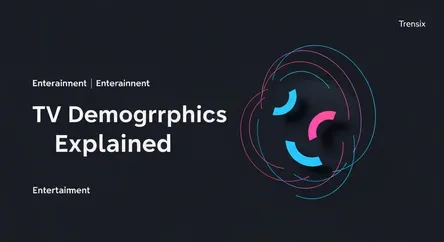Entertainment
TV Demographics Explained

Discover what TV demographics are, how they're measured, and why they decide which shows get renewed or canceled. Learn how viewer data shapes TV.
What Are TV Demographics?
TV demographics are statistical data that break down a television show's audience by characteristics like age, gender, ethnicity, income, and location. For decades, companies like Nielsen have measured this through ratings, tracking who is watching what and when. This data helps networks and advertisers understand the specific audience a show attracts. For instance, a show might have a strong following in the coveted 18-49 age demographic, which is highly valued by advertisers for its spending power.
Why Are They Trending?
Demographics are always a hot topic because they directly impact a show's financial viability and its ultimate fate. Networks use this data to set advertising rates—the more desirable the demographic, the higher the price for a commercial slot. In the streaming era, the conversation has intensified. Services like Netflix and Hulu collect vast amounts of first-party data, allowing for even more precise audience segmentation. This hyper-targeting influences content decisions and renewal strategies, making demographic analysis more crucial than ever.
How Do They Affect Viewers?
The influence of demographics on viewers is profound. The shows that are created, greenlit, and promoted are often designed to appeal to specific, advertiser-friendly groups. This can mean more content tailored to certain tastes, but it can also lead to the cancellation of beloved shows that fail to attract the 'right' audience. Furthermore, it shapes on-screen representation, as networks create storylines they believe will resonate with a target demographic. Ultimately, what you see on TV is a direct result of who the industry thinks is watching.